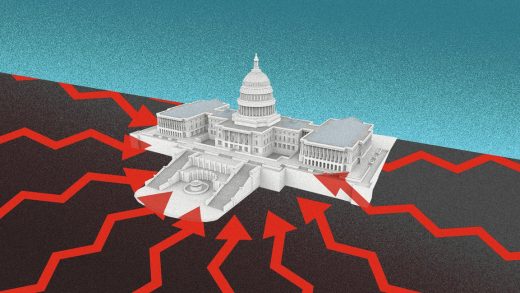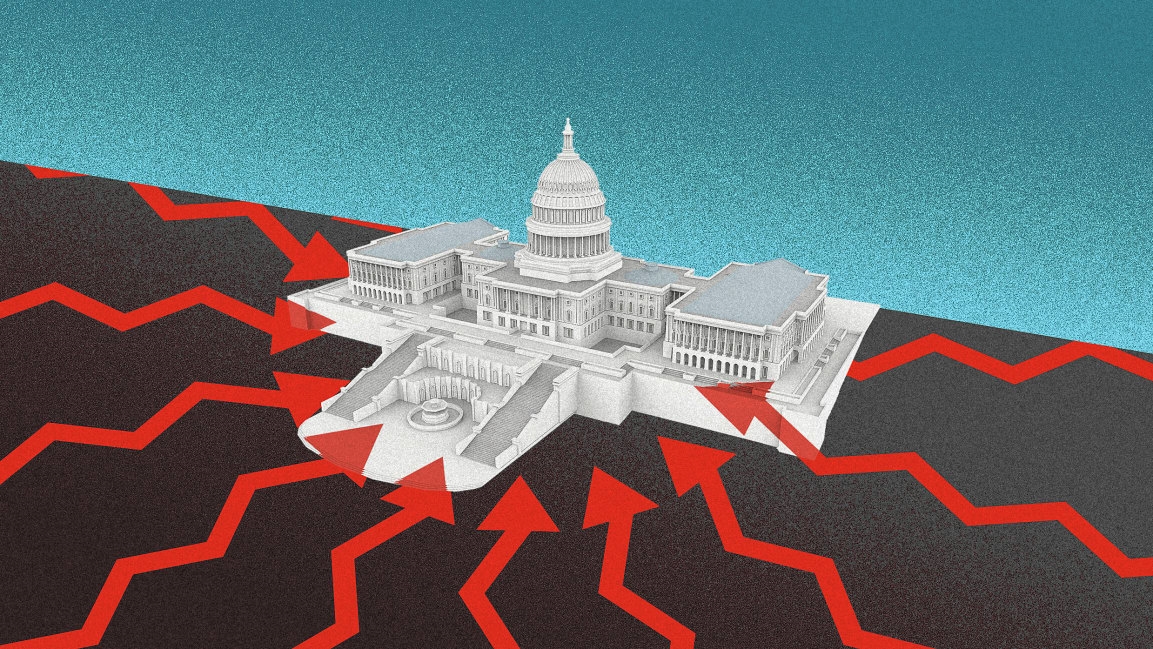Washington, D.C., wasn’t designed for an insurrection
The scene is still almost impossible to believe. Thousands of protesters, incited by the words of Donald Trump, stormed the Capitol building this week to protest the ratification of presidential incumbent Joe Biden. They climbed walls and knocked out windows before treating the most important law-making building in the United States as a playground.
Following a particularly horrific year of anti-Black police brutality, the scene was borderline jovial as the Capitol Police did little to deter the armed mob. (At least one officer even posed for a selfie.)
The double standard of treatment points to systemic racial inequity in our country. But the security failure also points to something else: a design problem. “I always used to say to our folks, you have the most difficult security job in the world,” says Bob Peck, principal at the architecture firm Gensler, who previously oversaw D.C. building security as the Commissioner of the General Services Administration for eight years under Presidents Clinton and Obama. He also served in the Army’s Special Forces. “It’s kind of easy to defend a closed installation—an army base or nuclear plant. Nobody gets in. If you get over the fence, we shoot you. But we’re talking about the place we invite the public to, and [want them to] feel welcome.”
Peck says that D.C. is more secure than this week’s insurrection might lead you to believe, but ultimately, the tension between our capital’s openness and security has been bubbling up for more than 200 years. This week, that bubble burst.
And while the mob did highlight some architectural limitations at the Capitol, architecture alone isn’t responsible for this security failure.
“Just like there is almost nothing architecture can do to prevent planes from being taken over . . . it is a series of moves—intelligence gathering, surveillance, fortification, training, and scenario planning—that add up to a thorough web of measures to prevent similar or worse acts,” says Ken Lewis, managing partner at the architecture firm SOM.
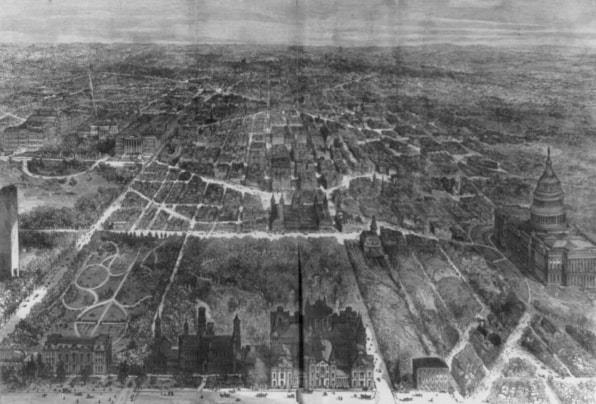
Washington, D.C., was designed like a giant park
Washington, D.C., was designed to be open. The city, first envisioned by French engineer Pierre Charles L’Enfant, was founded in grandiose, classical architecture, nodding to Greek and Roman democracy. The gesture was aspirational. It wasn’t meant to feel exclusive or fortress-like. In L’Enfant’s vision, Washington was meant to be open to politicians and visitors alike, with lush green spaces, including publicly accessible gardens at the White House.
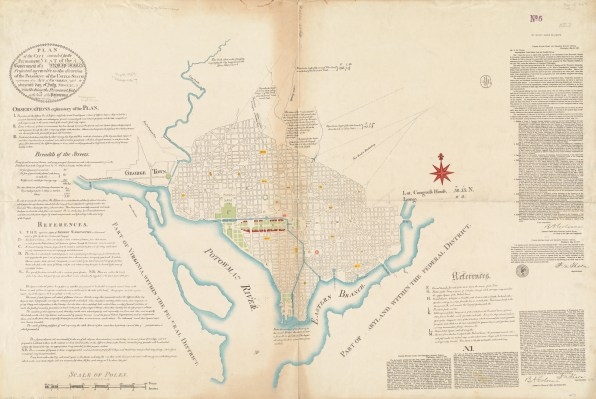
[Image: Wiki Commons]
“The city is one big symbolic gesture to what the nation is supposed to be,” says Dr. Lindsay M. Chervinsky, a historian who specializes in early presidential history.
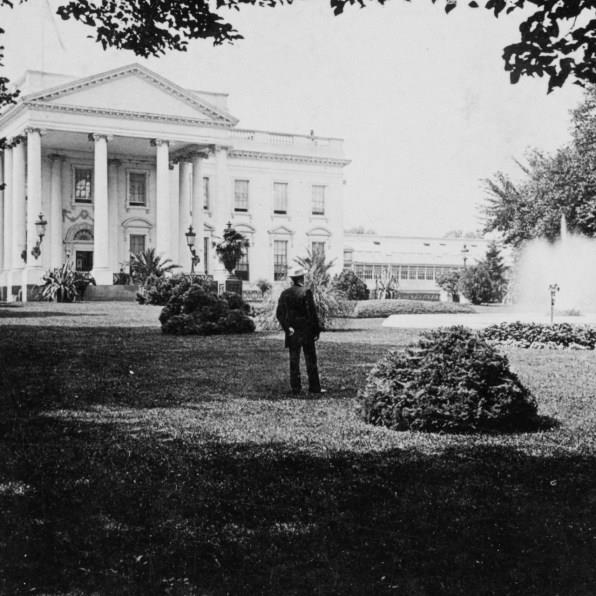
[Photo: United States Library of Congress]
In the early years, the public could literally knock on the front door of the White House in hopes of getting an audience with the president. Thomas Jefferson was the first to add a simple, stone gate to the White House along the north lawn. “It wasn’t intended as a security measure, and was more a way to demarcate the grounds—and frankly, keep horses and cattle off the gardens because it was seen as farmland,” says Chervinsky. “The south lawn, particularly, was viewed as a common park.” At his own tense inauguration, Abraham Lincoln insisted that his guards dress like civilians, so that the White House didn’t feel militaristic. Even after Lincoln’s assassination, the White House grounds were closed at night, but still open during the day. “Local residents would come and treat it as any other common green space,” Chervinsky says.
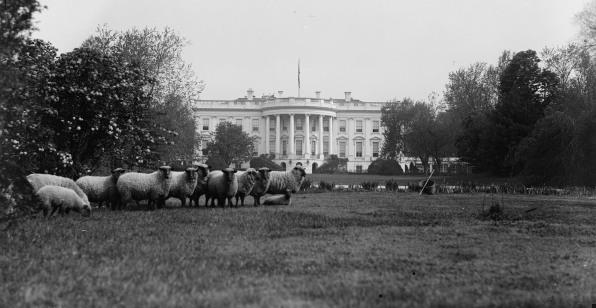
[Photo: Harris & Ewing/United States Library of Congress]
Sometimes, the White House was so open that it made presidents feel like their own home was being intruded upon. “Theodore Roosevelt was particularly frustrated by the lack of privacy on the grounds,” says Chervinsky. His complaints did little to close public access, however. It took both World War I and World War II to slowly erode this openness and close the lawn for visitation, as areas were sealed off as an international security measure. In 1976, wrought iron gates in front of the White House were replaced with steel, to stop automobiles from potentially racing onto the lawn, and 39 years later, the fence got sharp tops to deter people from climbing over it. In the past six months, President Trump has closed off the White House further, expanding fencing and blocking off Lafayette Square (a frequent protest area).
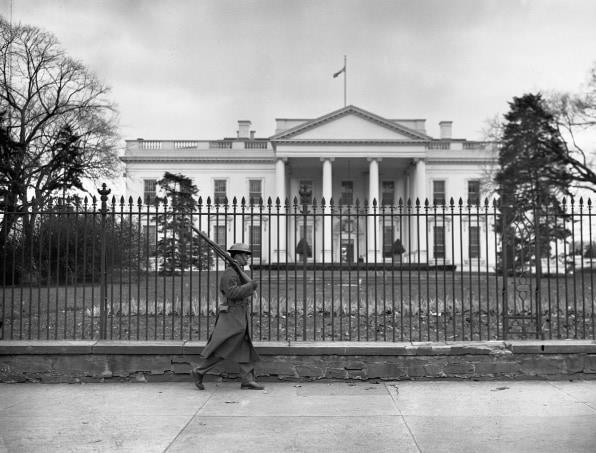
[Photo: Bettmann/Getty Images]
Of course, the White House is not the Capitol. But its well-documented history is symbolic of the larger evolution of security in government buildings in D.C., including the Capitol building.
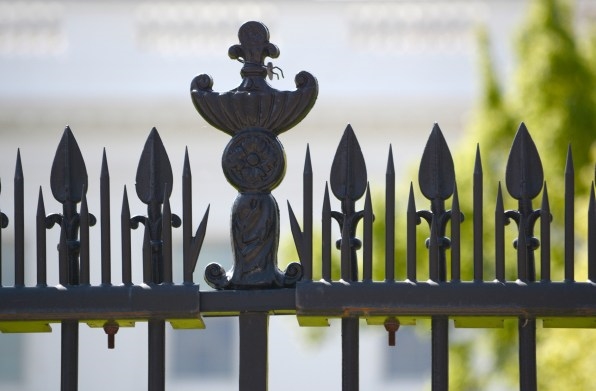
[Photo: Robert Alexander/Getty Images]
Quiet security everywhere
Today, areas such as the Capitol building have concrete blockades to keep out cars, but not much more in terms of overt, architectural deterrents. “I think some of the security measures are there [across D.C.] but we can’t see them,” says Chervinsky. “The Secret Service doesn’t talk about them.”
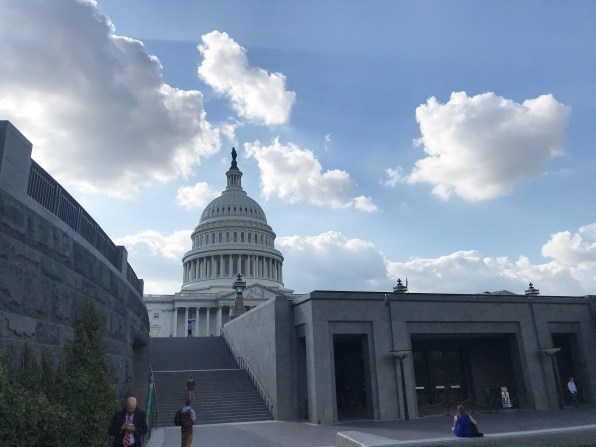
[Photo: Kiyoshi Tanno/iStock]
This clandestine approach contrasts sharply with how New York advertised the rebuilt World Trade Center area following September 11. “When we talk about these deterrents, we’re public about it. We don’t hide it,” says Ken Lewis, who was project manager on 7 World Trade Center, the first of the WTC buildings to go back up after 9/11. He openly details the building’s ultra-high-strength concrete walls to resist car bombs and clean air intake from top floors to counter an anthrax attack. “I’m a believer in being very public about most of it, because it’s a threat deterrent,” says Lewis. “Listening to the police, the people who are connected to the Joint Terrorism Task Force, they were of that mind.”
But that hasn’t been the case in the District. “99.9% of the time you don’t need any of this [security] stuff. And we want to design it in a way that that’s the way it looks and operates, rather than disrupting everything,” says Peck. “Making the Capitol building more closed off would be a tragedy on its own.”
D.C. does have one obvious security measure you won’t find elsewhere: sharpshooters who sit on the White House roof. But for the most part visitors can move more or less where they like. Tourism to the D.C. area has tripled since the 1970s, and three million people a year now visit the Capitol building alone.
The inner Capitol itself is closed to the public but relatively open in its design. The Capitol steps are guarded with some personnel and barricades, but they are also just sitting there in the open.
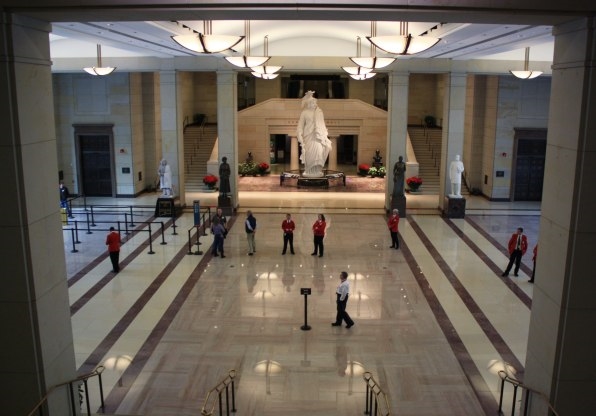
[Photo: Flickr user linearclassifier]
After September 11, the Capitol expanded with a $700 million Visitor Center that opened in 2008. Built in the basement, it’s a gathering place for up to 4,000 tourists a day to learn about democracy. Peck, who didn’t design the structure but is familiar with the building’s strategy, explains that by moving tourists to the basement, the goal was to control crowds and get large groups away from the Capitol’s main entrances. The Visitor Center is also a heavily fortified bunker, complete with blast doors and secure rooms. Indeed, nowhere captures the complicated duality of D.C.’s tension between security and openness so clearly as the Center. (The lead architect of the Center declined to speak for this piece given that he’s subject to a nondisclosure agreement, and detailing the Center further could constitute a matter of national security.)
During the mob rush on January 6, as rioters ran up the Capitol steps, Congress fled to the Center as part of a carefully choreographed defensive plan.
Washington, D.C., vs. the mob
While you can’t have a picnic at the White House today, Washington still looks like a friendly place, full of expansive lawns for the public. But Peck, having overseen the security of its government buildings, knows that measures have become more restrictive over the years.
Peck first took the GSA-commissioned job under Clinton just weeks after the Oklahoma City bombing. “You really start with intelligence. What’s the threat? What are you protecting from?” asks Peck. “After the Oklahoma City bombing, everybody was talking about truck bombs . . . [though] you have to be careful about always fighting the last war, because the next one is going to be different.”
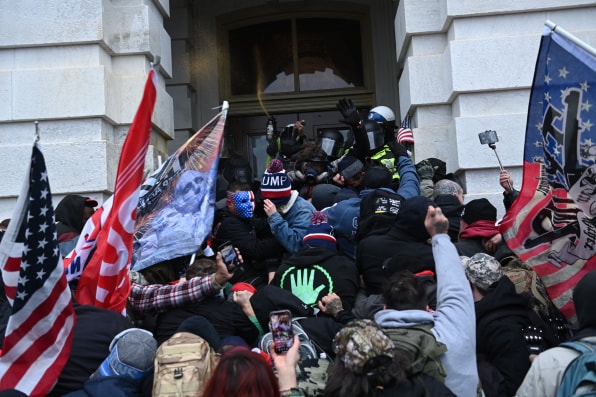
[Photo: Brendan Smialowski/AFP/Getty Images]
Much of that concern around vehicular bombs is built into the D.C. landscape today as subtly as possible. “What can you do to make it not look like you created a fortress?” Peck muses, while listing some of the defensive structures that a layperson’s eye would miss. “In Washington, a lot of the park benches you see are a whole lot stronger than park benches you might see on Main Street. Trees of a certain caliber . . . you can’t get through them without a battle tank.” Trees. Benches. And yes, even the grass itself creates a defensive structure against terrorists.
A slight grade in a lawn is a lot more effective than you might think. Around the Washington Monument, Peck’s team constructed a grass line to start 24 inches above the walking path. It’s a mere two feet jump, but that’s enough to stop cars and trucks that might be carrying bombs. Small bumps in the grass, known as berms, can subtly do the same thing and can nudge people to explore a space in tighter files. These pinch points are key to defending a structure, Peck says.
The Capitol itself has a large grass area in front, with an expanse that makes the Capitol defensible through sheer depth. “In the military, we always talk about giving up space for time—time to organize defenses,” says Peck. “For areas like the Mall or Capitol when there’s a big protest like this, you want to design the space so there are things you can bring in.”
These interventions include spots for emergency barriers that can be set up on the grounds quickly. Instead of making the Capitol a fortress all the time, you turn it into a fortress on demand. (The pop-up defensive strategy is popular today and is used at the World Trade Center too.) Peck believes the Capitol Police have some such capabilities but failed to implement them.
One reason this may have failed at the Capitol is procedural: something within Capitol Police bureaucracy prevented the proper defense of the Capitol, Peck suggests. Another reason he points to is that Washington’s current defenses may be focused too much on truck bombs and other lone attacks—the ghosts of Oklahoma City and 9/11—more than mass turmoil or civil unrest.
“Obviously, they have not thought a lot about a mob that was determined not just to demonstrate outside but to get into the building,” says Peck. “Clearly, for various reasons, they weren’t prepared as well as they could be for a crowd this size with this intention.”
Peck doesn’t seem surprised that, once protesters knocked down flimsy police barriers, they were able to storm the steps and roam freely through the Capitol building itself.
As for rioters who were photographed climbing the Capitol’s wall, several people familiar with the building’s architecture suggested that this seemed to be more about theatrics, or impatience from waiting on the crowded stairs, than some necessity to breach the Capitol. The walls are, after all, right next to the stairs.
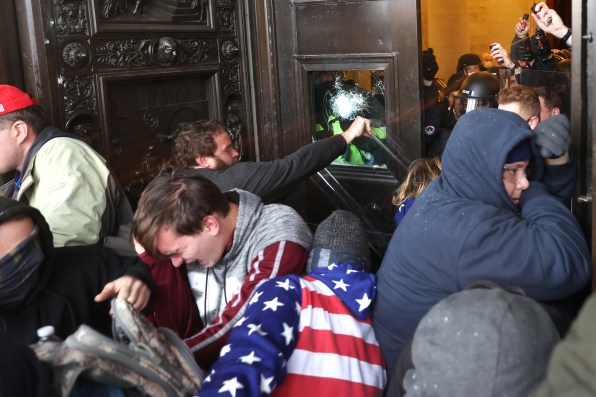
[Photo: Tasos Katopodis/Getty Images]
As for the glass windows that were kicked in? Those windows may have been shatterproof, says Peck, but they don’t appear to be bulletproof or blast-proof. And he knows why.
“Here’s the problem, once you put strong glass in a window . . . bulletproof glass is really expensive . . . and these glasses are kind of heavy and thick,” he says. “In a historic building, the original glass is old-fashioned thin. If you’re going to put in new glass you need to replace the entire window frame.” If a window shatters, the shards may hurt people. If a bomb blows a blast-proof window clear out of its frame, that solid design may hurt people too. It’s not so clear-cut that implementing bulletproof windows in the Capitol would make it vastly less penetrable or more safe. “All of these things cost a lot of money, and people do make really hard, horrible cost-benefit decisions, starting with, ‘What do I think the threat is? What do I think is really going to happen here?’”
So what fortifications does the Capitol need?
Inside the building, rioters stormed up the grand staircases, and they were able to reach the rotunda from the second floor. Peck suggests that it may be time for the Capitol to consider more internal protections, such as firewalls that could drop from the ceiling to seal off staircases and corridors from intruders. “I don’t think anyone ever thought that was an important thing to do,” says Peck.
They may reconsider.
“There are inaugurations every four years, for which there’s a decent amount of thought in crowd control. What we’ve never thought about is a crowd this intent on getting into the building,” says Peck. “The first line of defense in our country is for people to behave civilly. That’s kind of what we’ve assumed happens in our country. We don’t assume armed insurrection but maybe that thinking has to change. We didn’t use to think about truck bombs either. We may just have a new threat assessment.”
(36)

